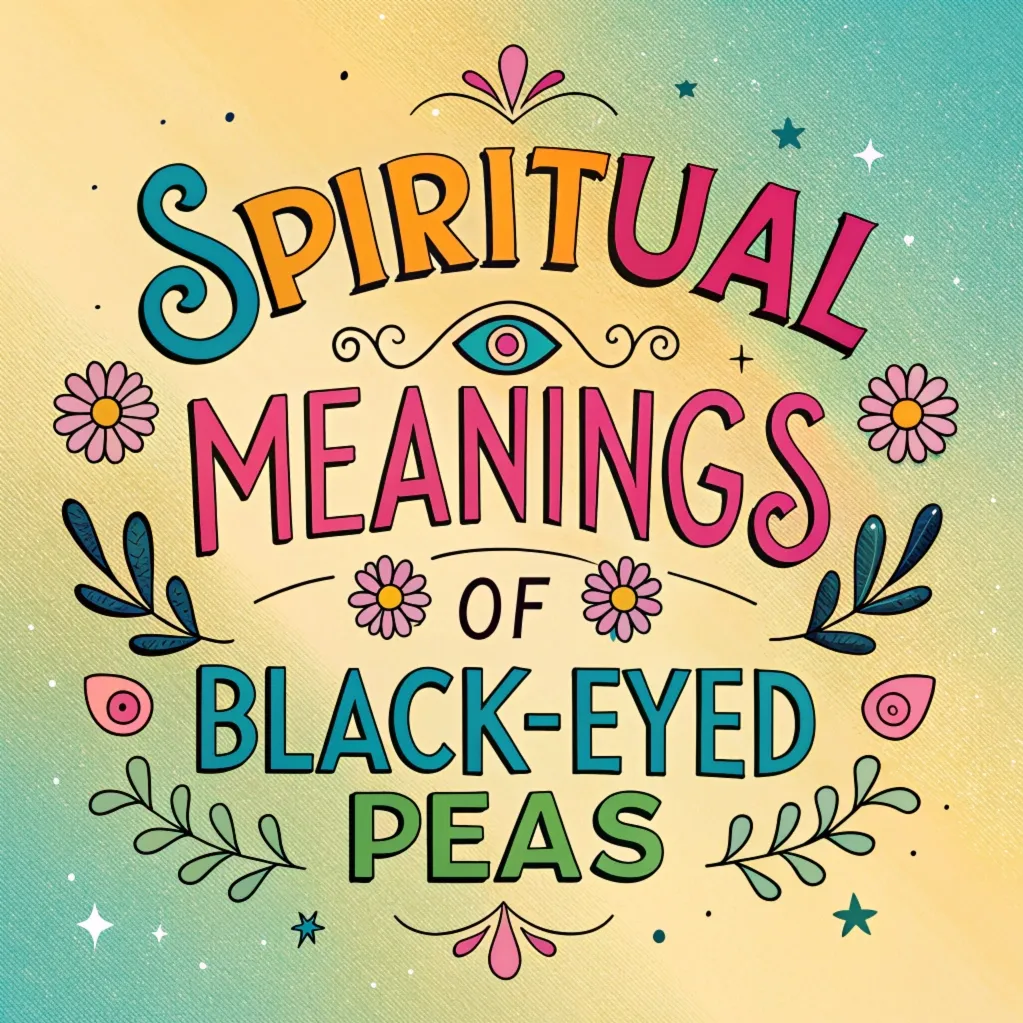14 Spiritual Meanings of Black-Eyed Peas: Mystical Significance and Cultural Importance
Black-eyed peas have long been associated with various spiritual and cultural meanings across different societies.
These humble legumes carry a rich history and symbolism that extends far beyond their nutritional value.
Let’s explore the 14 spiritual meanings of black-eyed peas and uncover their profound significance in different traditions and beliefs.
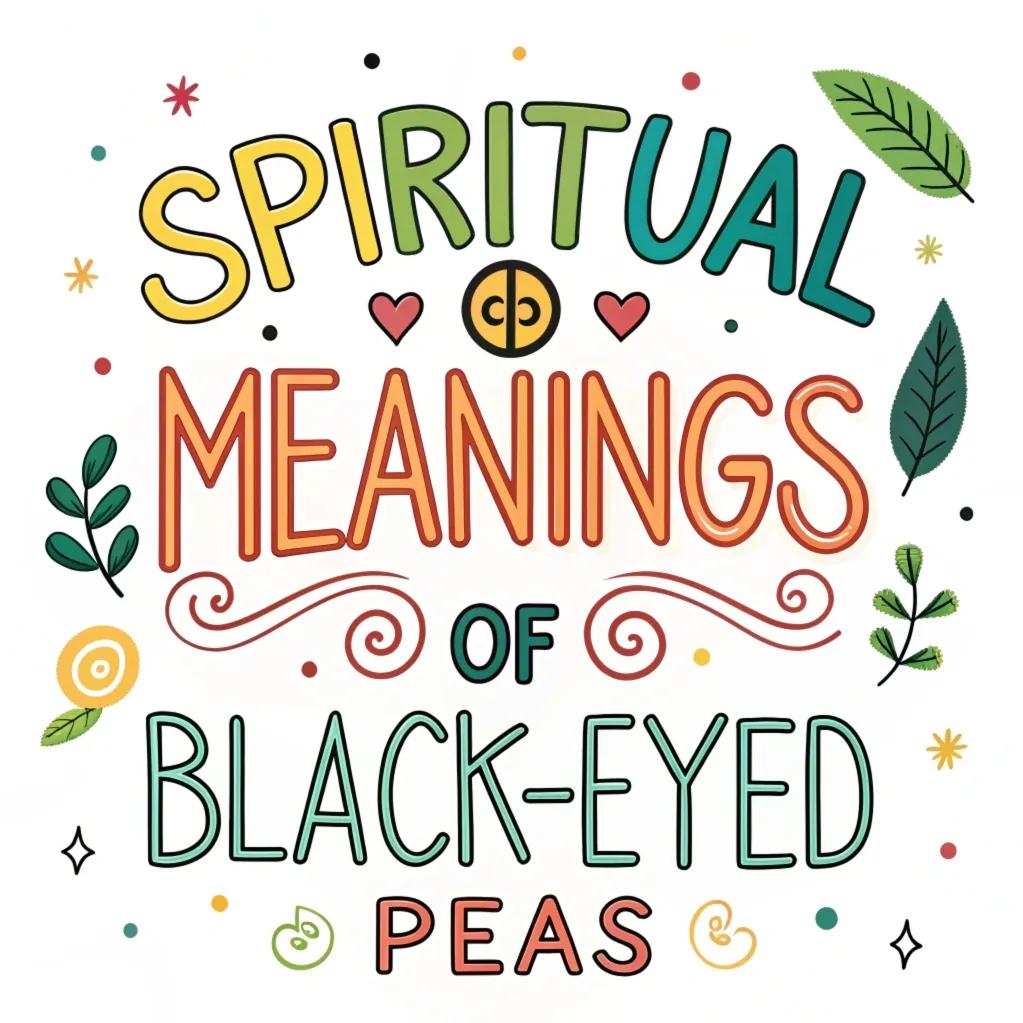
Key Takeaways:
- Black-eyed peas symbolize good luck and prosperity in many cultures
- They are associated with fertility and abundance
- The peas represent resilience and survival in challenging times
- They are considered a symbol of humility and gratitude
- Black-eyed peas are linked to spiritual protection and warding off evil
- They play a significant role in New Year’s traditions across the Southern United States
- The peas are connected to African heritage and cultural preservation
- They symbolize unity and community in various traditions
- Black-eyed peas are seen as a bridge between the physical and spiritual realms
- They represent growth and new beginnings
- The peas are associated with divine blessings and favor
- They symbolize balance and harmony in some spiritual practices
- Black-eyed peas are linked to ancestral connections and honoring traditions
- They represent hope and optimism for the future
Symbol of Good Luck and Prosperity
Black-eyed peas have long been regarded as a powerful symbol of good luck and prosperity in various cultures, particularly in the Southern United States. This belief is deeply rooted in historical and cultural traditions.
The practice of eating black-eyed peas for luck is generally believed to date back to the Civil War era. During this tumultuous time, these humble legumes played a crucial role in sustaining Confederate soldiers through harsh winters, transforming them into a symbol of fortune and prosperity.
The tradition has evolved over time, with many families incorporating black-eyed peas into their New Year’s Day celebrations. Some even place a dime in the pot of black-eyed peas, symbolizing the dish’s ability to bring prosperity through coins.
The person who receives the dime in their serving is believed to receive an extra boost of good luck for the coming year. This custom highlights the strong association between black-eyed peas and the hope for financial abundance and overall good fortune in the months ahead.
Representation of Fertility and Abundance
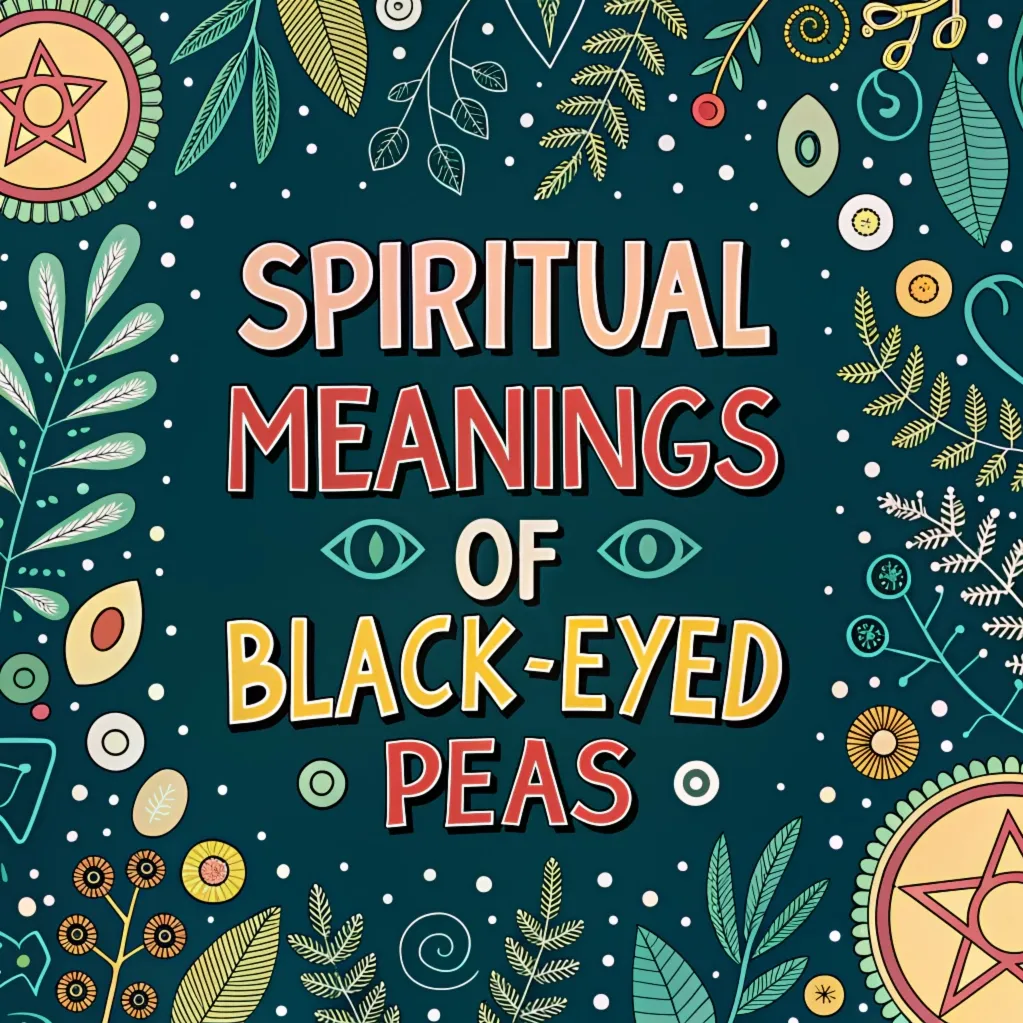
In many spiritual traditions, black-eyed peas are seen as a powerful representation of fertility and abundance. This symbolism stems from the peas’ prolific nature and their ability to thrive in various conditions.
In West African cultures, black-eyed peas have long been associated with fertility deities and are often used in rituals and celebrations related to childbirth and family growth.
The peas’ ability to swell during cooking is seen as a metaphor for expansion and increase, further reinforcing their connection to abundance.
This symbolism has carried over to other cultures, where black-eyed peas are often consumed or used in rituals to promote fertility and invite abundance into one’s life. The peas’ round shape is also significant, as it represents the cycle of life and the continuous flow of blessings.
In some traditions, black-eyed peas are scattered in fields or gardens to encourage a bountiful harvest, reflecting their deep-rooted association with agricultural abundance and the earth’s generosity.
Symbol of Resilience and Survival
Black-eyed peas have come to symbolize resilience and survival in the face of adversity. This meaning is deeply rooted in the historical context of the American South, particularly during and after the Civil War.
When Union Army troops under General Sherman were razing or stealing crops, they ignored the fields of black-eyed peas due to their reputation as livestock feed.
This oversight allowed Confederate soldiers and civilians to survive on the remaining black-eyed peas during harsh winters, elevating the humble legume to a symbol of perseverance. The peas’ ability to grow in hot, drought-prone conditions further reinforces their association with resilience.
In West African traditions, black-eyed peas are seen as a symbol of kindness and mercy, often given as charity to those in need. This dual symbolism of survival and compassion has made black-eyed peas a powerful reminder of the human spirit’s ability to endure and thrive in challenging circumstances.
Today, consuming black-eyed peas serves as a tribute to ancestors who persevered through hardship and a hopeful gesture towards overcoming future challenges.
Embodiment of Humility and Gratitude
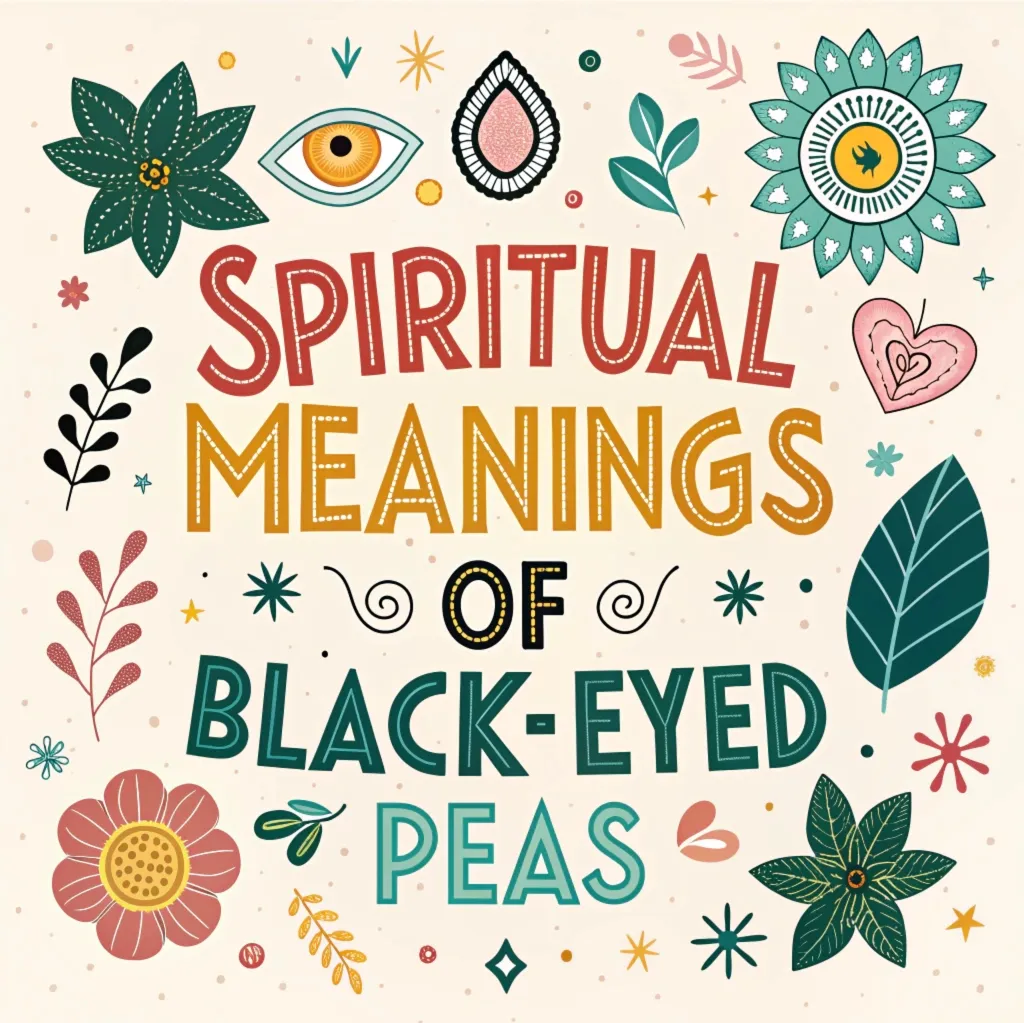
Black-eyed peas are often seen as an embodiment of humility and gratitude in various spiritual and cultural traditions. Their humble origins as a food primarily associated with livestock and the poor have transformed them into a powerful symbol of modesty and appreciation for life’s simple blessings.
In many Southern traditions, eating black-eyed peas on New Year’s Day is believed to bring good fortune precisely because it demonstrates a willingness to start the year humbly. This practice is rooted in the belief that showing humility makes one worthy of good fortune.
The act of preparing and sharing black-eyed peas is also seen as a gesture of gratitude for the sustenance and community they provide.
In some African American traditions, black-eyed peas are used in rituals of thanksgiving, acknowledging the resilience and strength of ancestors who survived on these simple legumes.
By incorporating black-eyed peas into spiritual practices and celebratory meals, individuals and communities express their gratitude for life’s essentials and their appreciation for cultural heritage.
Spiritual Protection and Warding Off Evil
In various spiritual traditions, black-eyed peas are believed to offer protection against negative energies and ward off evil. This protective quality is often attributed to the distinctive black “eye” on each pea, which is seen as a symbol of watchfulness and divine oversight.
In West African traditions, black-eyed peas have long been considered a good luck charm that could ward off the Evil Eye, a belief that has persisted in some form in other cultures.
The peas’ association with spiritual guardianship is reflected in practices where they are used in amulets or scattered around homes for protection.
In some Yoruba traditions, the word for black-eyed pea, “ewa,” is closely related to words for beauty and tradition, suggesting that consuming these peas connects one to ancestral protection and cultural beauty.
The practice of eating black-eyed peas at the start of a new year or during significant life transitions is often seen as a way to invite protective energies and cleanse oneself of negative influences from the past. This spiritual significance has contributed to the enduring popularity of black-eyed peas in various rituals and customs aimed at ensuring safety and well-being.
New Year’s Tradition and Cultural Significance
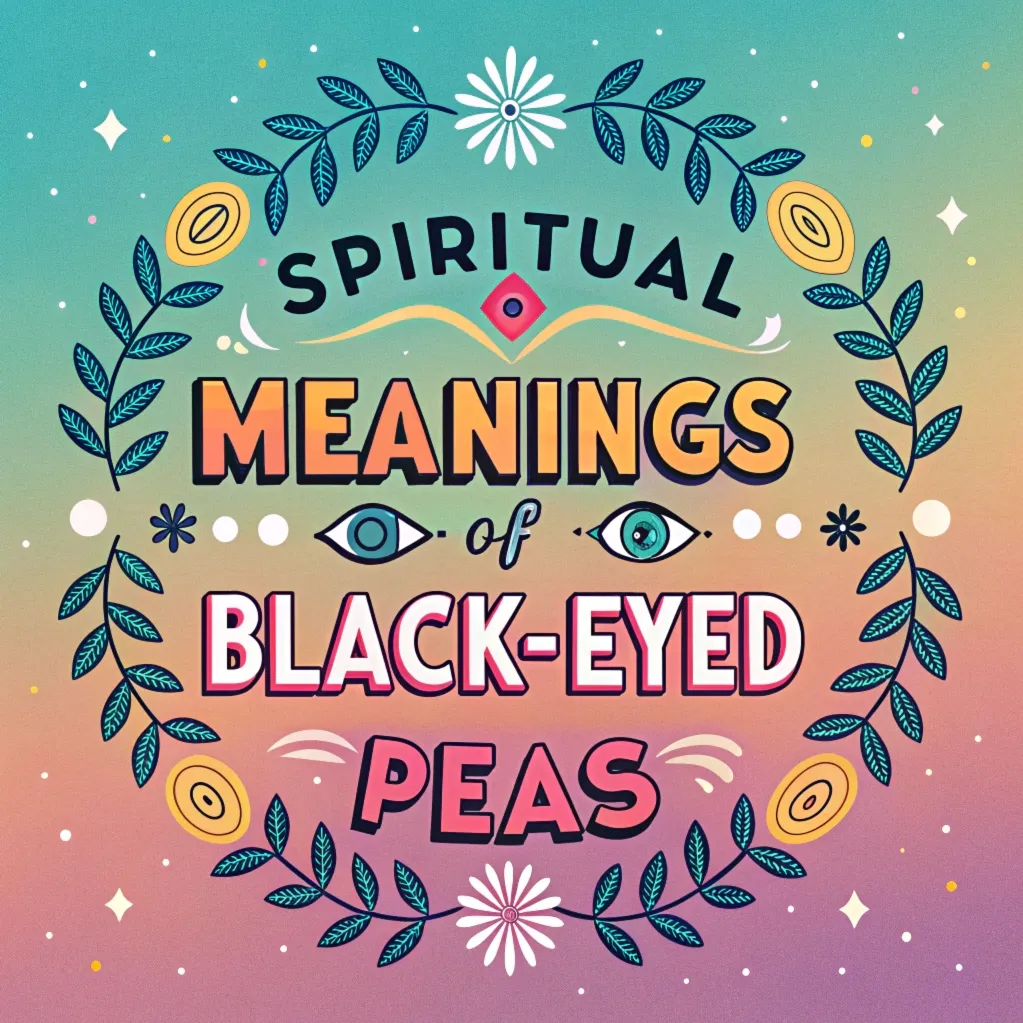
The tradition of eating black-eyed peas on New Year’s Day has become a deeply ingrained cultural practice, particularly in the Southern United States. This custom is believed to bring good luck and prosperity for the coming year.
The tradition has evolved to include various rituals and beliefs. For example, some families prepare Hoppin’ John, a dish combining black-eyed peas with rice, symbolizing the hope for increased fortune. Others serve the peas with greens (representing paper money) and cornbread (representing gold) to further emphasize the wish for financial prosperity.
The practice of eating at least 365 black-eyed peas on New Year’s Day, one for each day of the year, is believed to ensure good luck every day. This tradition has roots in various cultural influences, including West African, European, and Jewish customs, reflecting the diverse heritage of the American South.
The New Year’s black-eyed pea tradition has spread beyond the South, becoming a unifying cultural practice that brings families and communities together to share hopes and aspirations for the future.
Connection to African Heritage and Cultural Preservation
Black-eyed peas hold a significant place in African heritage and play a crucial role in cultural preservation for many African diaspora communities. Originally native to West Africa, these legumes were brought to the Americas through the transatlantic slave trade.
They became a staple food for enslaved Africans, helping them maintain a connection to their homeland. In West African cultures, black-eyed peas are associated with various deities and spiritual forces, and this spiritual significance has been preserved to some extent in diaspora communities.
The continued use of black-eyed peas in traditional dishes and rituals serves as a tangible link to ancestral traditions. In the Gullah-Geechee culture of the Carolinas, black-eyed peas are a key ingredient in Hoppin’ John, a dish that represents the preservation of West African culinary traditions.
The practice of eating black-eyed peas on New Year’s Day in the Southern United States is a fusion of African and American traditions, demonstrating how cultural practices evolve and adapt while maintaining core meanings. By continuing to incorporate black-eyed peas into their diets and traditions, many African Americans and other diaspora communities actively preserve and celebrate their heritage.
Symbol of Unity and Community
Black-eyed peas have come to symbolize unity and community in various cultural contexts. The tradition of sharing black-eyed peas, particularly during holidays and special occasions, fosters a sense of togetherness and collective well-being.
In many Southern communities, the preparation and consumption of black-eyed peas on New Year’s Day is a communal activity that brings families and neighbors together. This shared experience reinforces social bonds and creates a sense of belonging.
The practice of adding a coin to the pot of black-eyed peas and the belief that finding it brings extra luck highlights the communal nature of good fortune. In some African American communities, black-eyed peas are used in rituals that honor ancestors and strengthen family ties.
The peas’ ability to grow in clusters is often seen as a metaphor for community strength and support. In West African traditions, the sharing of black-eyed peas as a form of charity (sadaka) emphasizes the importance of community care and mutual support. By participating in these traditions, individuals reaffirm their connection to their community and cultural heritage.
Bridge Between Physical and Spiritual Realms

Black-eyed peas are often viewed as a bridge between the physical and spiritual realms in various belief systems. Their dual nature as both sustenance for the body and a symbol of spiritual significance makes them a powerful conduit for connecting the tangible and intangible aspects of existence.
In some West African spiritual traditions, black-eyed peas are associated with deities and spiritual forces, serving as an offering that facilitates communication between humans and the divine.
The practice of using black-eyed peas in divination rituals further emphasizes their role as a medium for spiritual insight. The belief that consuming black-eyed peas can bring good fortune is rooted in the idea that they carry spiritual energy that can influence physical reality.
In some traditions, the black “eye” of the pea is seen as a window to the spiritual world, allowing for greater awareness and connection to unseen forces. By incorporating black-eyed peas into spiritual practices and everyday meals, practitioners create a tangible link to the spiritual realm, reinforcing the interconnectedness of all aspects of life.
Representation of Growth and New Beginnings
Black-eyed peas are often seen as a powerful representation of growth and new beginnings. Their association with the New Year in many cultures symbolizes the potential for positive change and personal development.
The peas’ ability to sprout and grow quickly is seen as a metaphor for rapid personal growth and transformation. In some spiritual practices, black-eyed peas are used in rituals designed to initiate new phases of life or mark significant transitions.
The tradition of eating black-eyed peas at the start of the year is not just about luck, but also about setting intentions for growth and improvement. The peas’ round shape is often interpreted as representing the cyclical nature of life and the continuous opportunity for renewal.
In agricultural contexts, the planting of black-eyed peas symbolizes the beginning of a new growing season and the hope for a bountiful harvest. This symbolism extends to personal and spiritual growth, with the consumption of black-eyed peas seen as a way to nurture one’s potential and embrace new opportunities.
Association with Divine Blessings and Favor
In various spiritual traditions, black-eyed peas are associated with divine blessings and favor. Their presence in religious and cultural rituals often signifies an invocation of heavenly grace and protection.
In some West African belief systems, black-eyed peas are considered sacred to certain deities, and offering them is thought to curry divine favor.
The practice of eating black-eyed peas on auspicious days, such as New Year’s, is often seen as a way to align oneself with divine blessings for the coming period.
In some traditions, the black “eye” of the pea is interpreted as the watchful gaze of the divine, suggesting that consuming these peas brings one under spiritual protection.
The belief that black-eyed peas bring good luck is often rooted in the idea that they channel divine benevolence into one’s life. In some Jewish traditions, black-eyed peas are eaten on Rosh Hashanah as a symbol of abundance and divine blessing for the new year.
By incorporating black-eyed peas into spiritual practices and meals, individuals and communities express their openness to receiving divine blessings and their gratitude for spiritual guidance.
Symbol of Balance and Harmony
Black-eyed peas are often viewed as a symbol of balance and harmony in various spiritual and cultural contexts. Their distinctive appearance, with a black “eye” on a light background, is seen as a representation of the duality and balance in nature.
This visual balance is often interpreted as a reminder of the need for equilibrium in one’s life and spiritual practice.
In some traditions, the combination of black-eyed peas with other foods, such as greens and cornbread, is seen as creating a harmonious meal that balances different aspects of prosperity.
The practice of eating black-eyed peas as part of a New Year’s tradition is sometimes viewed as a way to start the year in a balanced state, setting the tone for harmony in the months to come.
In certain spiritual practices, black-eyed peas are used in rituals aimed at restoring balance to one’s life or environment. The peas’ ability to grow in various conditions is seen as a testament to their adaptability and ability to maintain harmony with their surroundings.
By incorporating black-eyed peas into their diets and spiritual practices, individuals seek to cultivate balance and harmony in their own lives and communities.
Link to Ancestral Connections and Honoring Traditions
Black-eyed peas serve as a powerful link to ancestral connections and a means of honoring traditions across various cultures. For many African Americans, the consumption of black-eyed peas is a way to maintain a connection to their African heritage and honor the resilience of their ancestors.
The tradition of eating black-eyed peas on New Year’s Day in the Southern United States is a fusion of African, European, and American customs, representing the complex cultural heritage of the region.
In some families, recipes for preparing black-eyed peas are passed down through generations, serving as a tangible link to family history. The use of black-eyed peas in traditional dishes like Hoppin’ John or in various African cuisines helps to preserve culinary traditions and keep cultural practices alive.
Embodiment of Hope and Optimism for the Future
Black-eyed peas have come to embody hope and optimism for the future in many cultural and spiritual contexts. The tradition of eating black-eyed peas at the beginning of a new year is not just about luck, but also about cultivating a positive outlook for the months ahead.
The peas’ ability to grow and thrive in challenging conditions is often seen as a metaphor for resilience and the potential for positive change. In some traditions, the act of preparing and sharing black-eyed peas is a way of collectively affirming hope for the community’s future.
The belief that consuming black-eyed peas can bring good fortune is rooted in the idea that one’s actions and intentions can shape future outcomes.
The practice of placing a coin in the pot of black-eyed peas symbolizes the hope for financial prosperity and the belief that small actions can lead to significant positive changes.
FAQs
Why are black-eyed peas considered lucky?
Black-eyed peas are seen as lucky, especially in the Southern United States, where eating them on New Year’s Day is believed to bring good fortune for the coming year. This tradition stems from their historical significance during the Civil War, when they helped sustain communities through difficult times.
What do black-eyed peas symbolize in African culture?
In African cultures, black-eyed peas symbolize fertility, abundance, and resilience. They are often associated with deities and used in rituals to invoke blessings for prosperity and family growth.
How can I incorporate black-eyed peas into my spiritual practices?
You can incorporate black-eyed peas into your spiritual practices by preparing them for significant occasions, using them as offerings in rituals, or sharing them in community gatherings to foster unity and gratitude.
Are there specific recipes associated with black-eyed peas?
Yes! Popular recipes include Hoppin’ John, black-eyed pea salad, Southern-style black-eyed peas with ham, and hearty black-eyed pea soup. These dishes often carry cultural significance and are enjoyed during celebrations.
Can I grow my own black-eyed peas?
Yes! You can grow black-eyed peas by planting seeds in a sunny location after the last frost. They require well-draining soil and consistent moisture. Harvest when the pods turn brown and dry.
What other cultures have traditions involving black-eyed peas?
Many cultures have traditions involving black-eyed peas, including West African communities that use them in rituals and dishes, Jewish traditions that feature them during Rosh Hashanah, and Caribbean cultures that incorporate them into festive meals.
How do I store dried black-eyed peas?
Store dried black-eyed peas in an airtight container in a cool, dry place away from sunlight. Regularly check for pests or moisture to maintain their freshness.
What nutritional benefits do black-eyed peas offer?
Black-eyed peas are high in protein and fiber, rich in vitamins (like folate), and low in fat. They contribute to digestive health and provide essential nutrients for overall well-being.

Welcome to Deep Spiritual Truths, I’m Gabriella Russo, a passionate seeker of spiritual knowledge and wisdom. On this platform, I share my insights and understanding of the mystical and metaphysical realms, exploring the deeper meanings and symbolism behind various spiritual concepts. Through my writings, I aim to inspire and guide those on their own spiritual journeys, offering a deeper understanding of the world and our place within it. Join me as we delve into the mysteries of the universe and uncover the profound truths that lie within.

